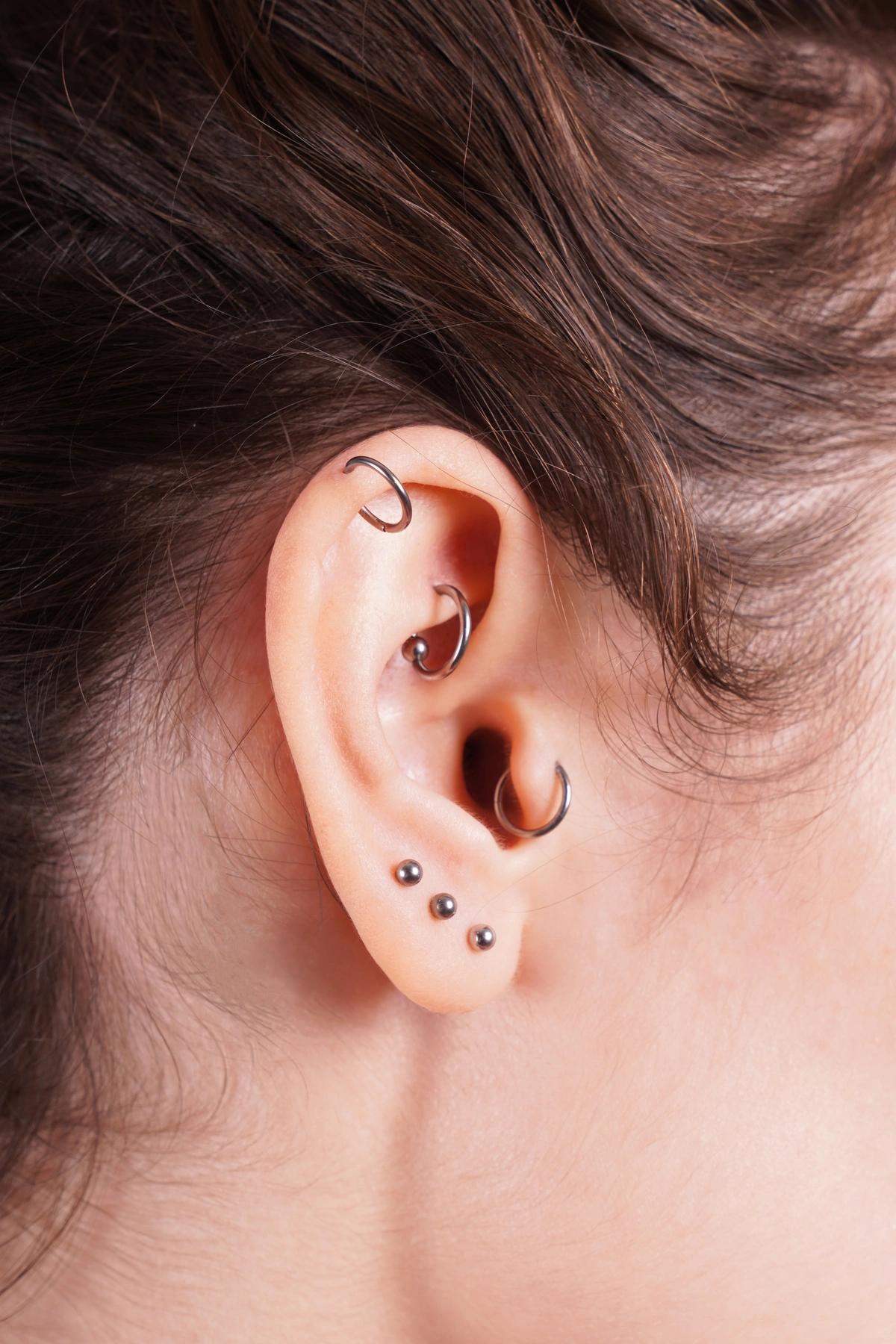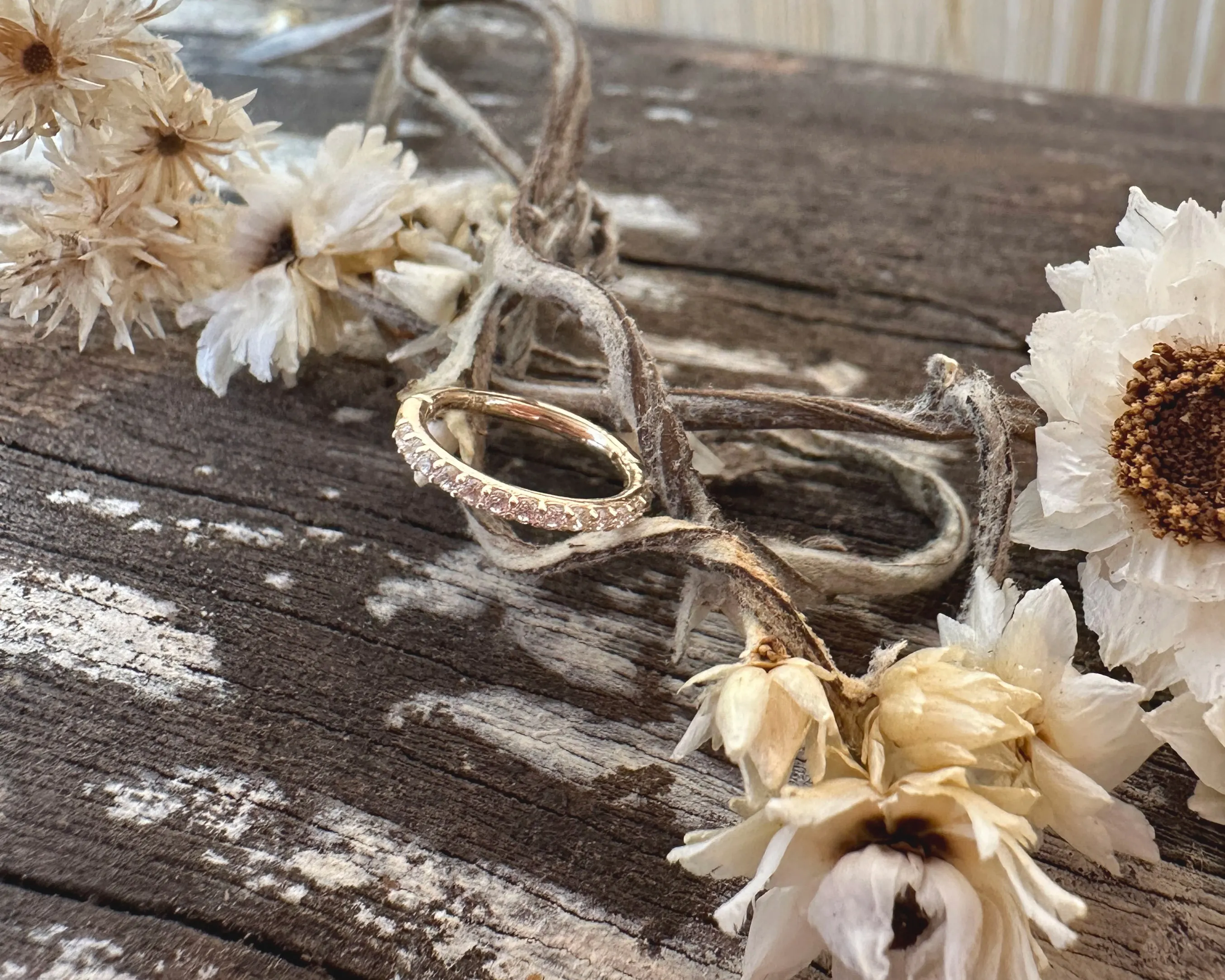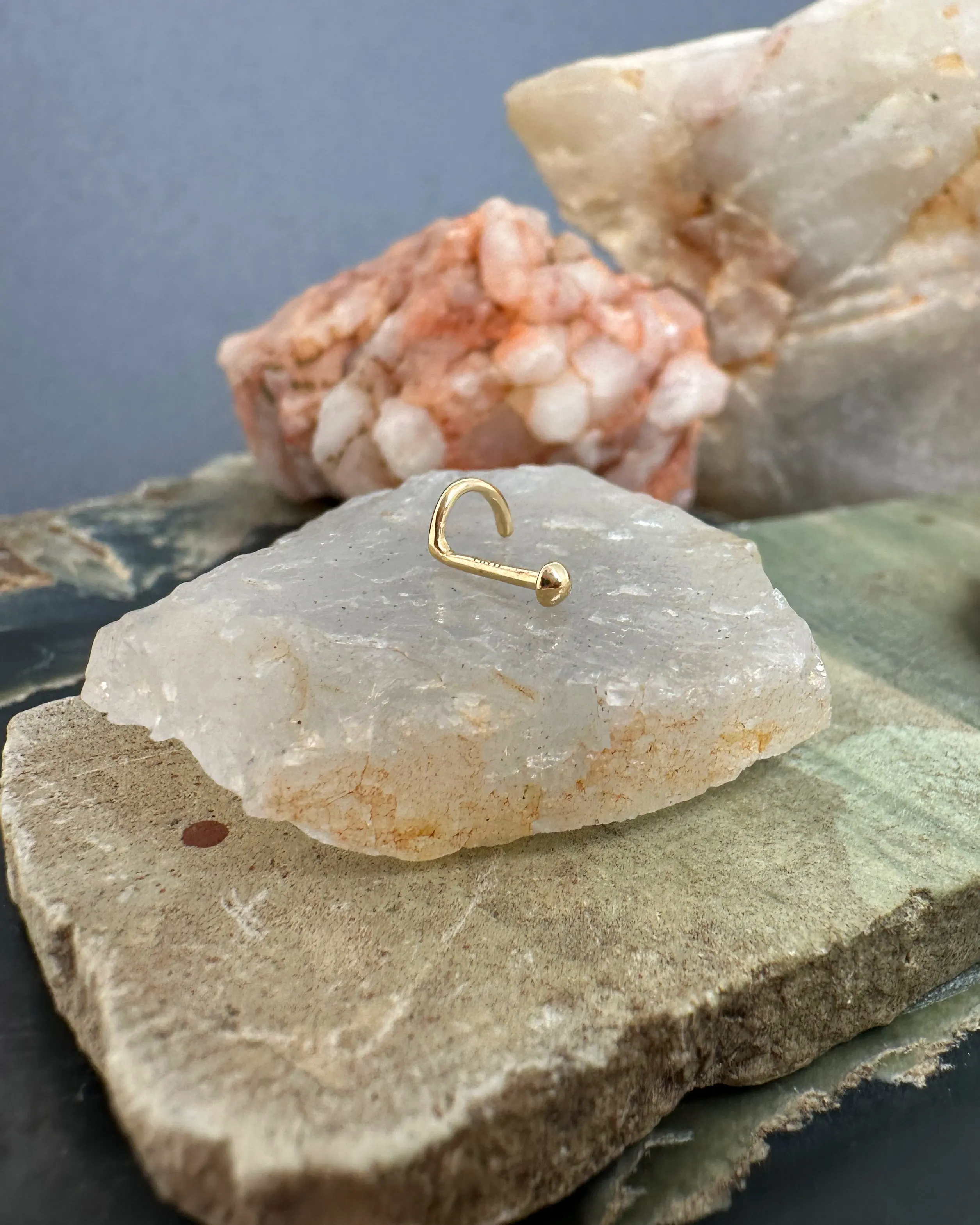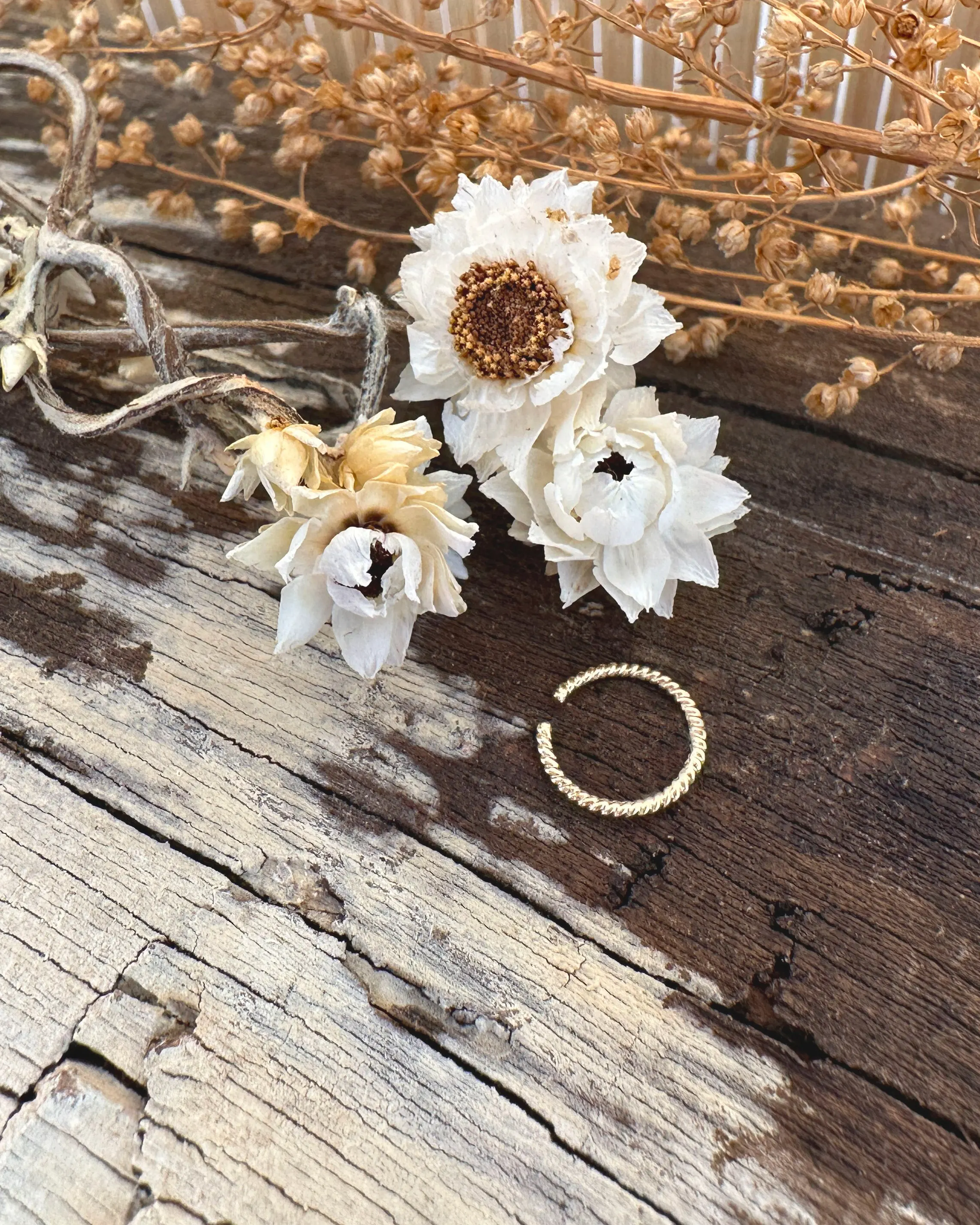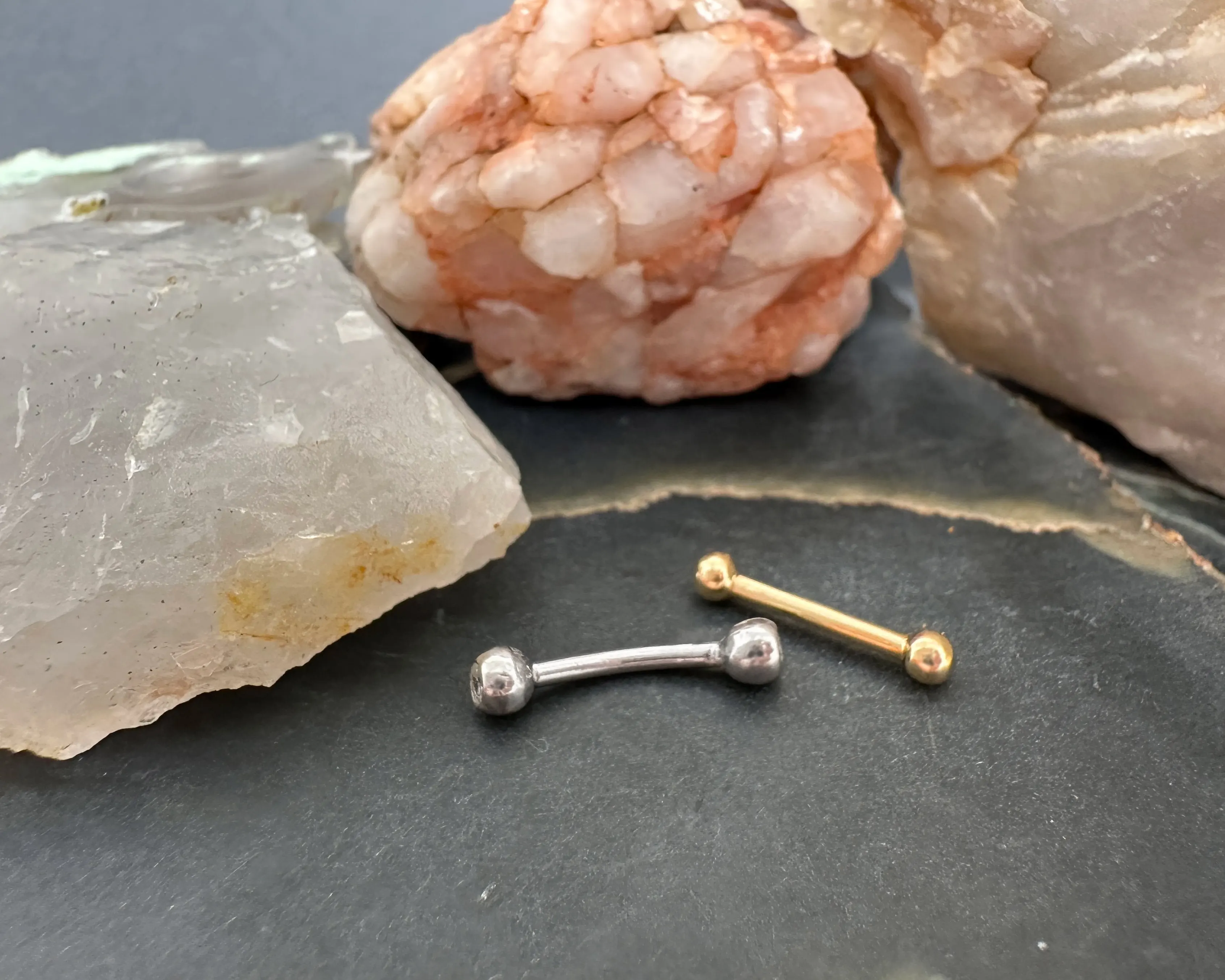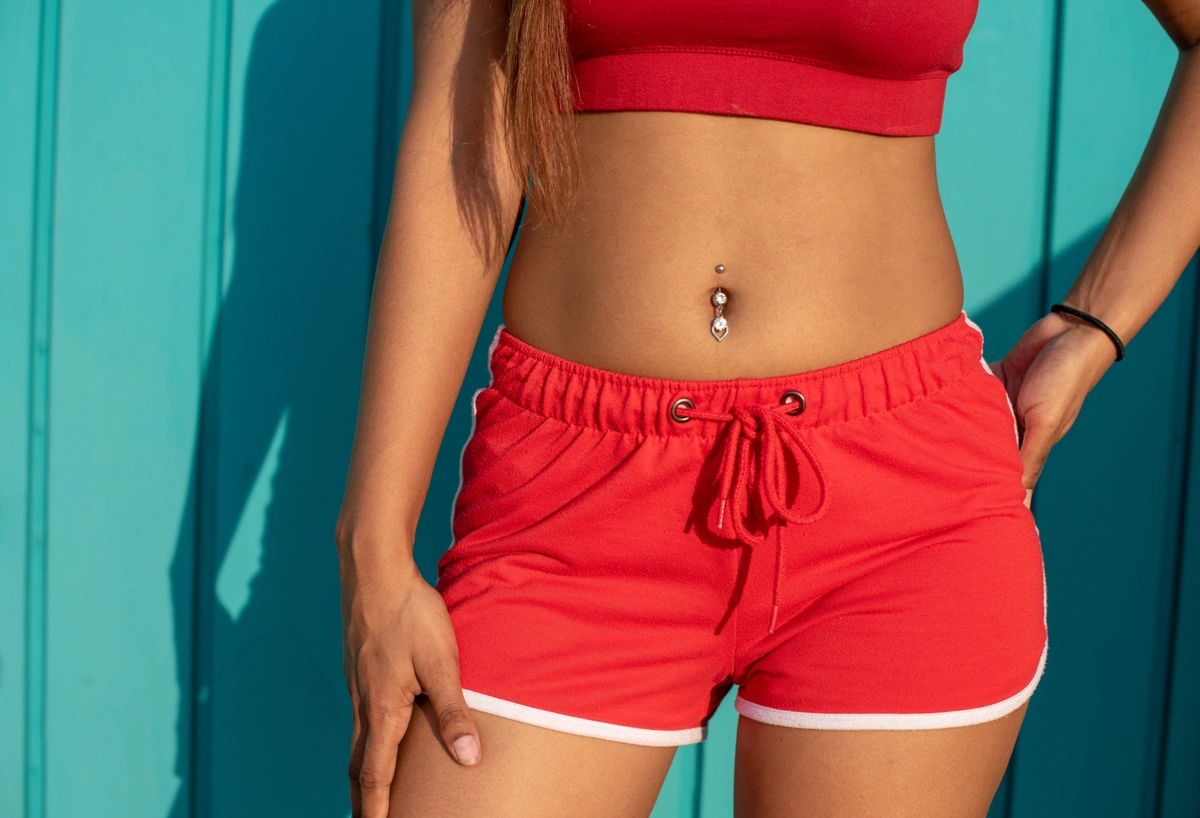Body piercings are becoming increasingly more popular, but there’s a lot to learn. Read on to learn about the materials, jewelry types, and more before you dive in!
Body piercings, like nose and eyebrow piercings, are becoming more mainstream. You can now find piercing specialty retailers without having to go to a tattoo parlor. More and more jewelry stores are adding piercing to their list of services and products. You'll also find an expanded demographic of who is getting piercings these days. As many people focus more on experiences rather than objects, piercings have become more popular. They are even becoming more of a fine jewelry experience, with piercing jewelry available in precious metals, precious and semi-precious stones, and available right in the jewelry store itself.
What do you need to know before you explore body piercings for you or your jewelry business? Keep reading!
Types of Metal Used for Body Piercings
There are a few things to take into consideration when selecting or making body jewelry. Body jewelry items are usually left in for longer periods of time. People often swap out earrings every single day but piercings may stay in place for weeks or months at a time. That means comfort, weight and material are extremely important.
Certain materials are great for healed piercings, but not appropriate to pierce with. Generally, you’re looking for nickel-free metals. Nickel is one of the most common contact allergens out there.
When it comes to certain materials that also have applications in medical usage, it is important to get materials certified by the International Society for Testing and Materials Standard (ASTM) and/or the International Standards Organization (ISO). These agencies certify that the material is a precise alloy and therefore represent a quality standard. Your piercer should have this documentation on hand for surgical steel and titanium jewelry if you would like to see it.
Materials for Initial Piercings
This is the material of the jewelry that will be put into your piercing first by the piercing professional you go to. There are extra considerations to take into account for this jewelry. Because your piercing starts out as a wound essentially, it’s in the process of healing and more susceptible to infection and irritation. The material your jewelry is made out of can inhibit the healing process if you don’t select the right ones. You want to make sure that the metal is biocompatible. Biocompatible means that the jewelry/material works with the body and won’t react with your skin. See the list below for materials that are safe for initial piercings.
- Surgical Steel – Surgical steel is a great option for initial piercings. It comes in many different alloys, so be sure to get jewelry that is STM F-138, ISO 5832-1, or ISO10993-(6, 10, or 11) compliant. Surgical steel does contain small amounts of nickel, but it’s generally not enough to cause a reaction.
- Titanium – Titanium is a fantastic option for initial piercings because it is lightweight and doesn’t contain nickel. Look for implant-grade titanium like ASTM F-136, ASTM F1295, ISO5832-3 compliant or commercially pure titanium tat is ASTM F-67 compliant. Titanium can also be anodized to create different colors without affecting the safety.
- Niobium – Niobium is similar to titanium, as it can also be anodized, but doesn’t need to be implant grade. It can also be anodized black, making it a popular option.
- Gold – gold of 14k or 18k quality and nickel/cadmium free is an excellent option for initial piercings. You can find biocompatible alloys in yellow, rose, or white colored gold. Anything higher than 18k is too soft to withstand the wear and tear, and anything below 14k includes a higher percentage of materials that can cause skin reactions and irritations.
- Platinum – Platinum is excellent for body piercings because it’s inert, meaning non-reactive. It will however, be the most expensive material and may be harder to find body jewelry made form platinum due to the difficulty of working with the material.
Materials for Healed Piercings
Any materials in the list above are also great for piercings that are already healed. Once healed though, your options expand because the skin is not at as high risk for infection or irritation.
- Sterling Silver – due to the copper in sterling silver, it can irritate a fresh piercing. Although once healed, it’s completely safe and you may already have sterling silver earrings in your collection! When it comes to body piercing jewelry that is threaded however, you’ll want to make sure your sterling silver is rhodium plated for durability.
- Alternative Materials – Materials like horn, bone, wood, amber, stone and other natural materials can be great for piercings. Certain plastics and glass can be as well. Be mindful when selecting these materials for your jewelry that the durability aligns with your lifestyle.
You’ll often see jewelry labeled as hypoallergenic. Hypoallergenic just means that it’s unlikely to cause an allergic reaction and contains few substances known to cause allergies. There is no standard legal or scientific definition of the word however, so be mindful when selecting jewelry labeled as hypoallergenic.
What to Look for When Selecting Jewelry
Once you’ve selected the material appropriate for your piercing, there’s a few other things you’ll want to consider. Body piercing jewelry is typically worn all the time, without being taken out for sports, swimming, showering, gardening, or other activities you may typically remove your jewelry for. Because of this, there are a few other things to consider to make sure it holds up and won’t cause irritation.
- Finish – Whether your piercing is fresh or healed, you always want to select high polished, smooth jewelry that lacks irregular surfaces. This is to cut down on the number of scratches, nicks, or cavities in your jewelry that can collect dirt and cause irritation or infection.
- Stones – If your jewelry has gemstones of any kind in the design, you’ll want to make sure they’re set by the metal and not glued in. Adhesives can cause skin irritation or infection. Additionally, they’re not as secure. If a gemstone falls out the cavity left behind can collect dirt, potentially causing issues later.
- Threading – There are two different types of threaded body jewelry. Internally threaded, meaning the threaded part of the jewelry is on the removable end, inside the bar and does not pass through your skin. Externally threaded jewelry has the screw pattern on the post that goes through your skin, not the removable ends. Only internally threaded jewelry should be used on fresh piercings to reduce the possibility of scraping/scratching your skin when inserting the jewelry. Threadless or press-fit jewelry is also acceptable for new piercings. There is a friction-fit pin that presses into the post, so no threads are present.
Types of Body Piercings Glossary
With body piercings so popular these days, it can be overwhelming to know all the options that are available. Thankfully, we’ve created a glossary for you that names each piercing and some of the common jewelry associated. Scroll down to start planning your future ear party or next piercing!
Ear & Cartilage Piercings
Ears are one of the most popular places for piercings. You might even already have a few! The diagram below shows where some of the most poplar ear piercings are located and their names – it can be a lot to keep track of! There’s a few types of earrings that are popular for ear piercings.
- Screw Back Earrings – These types of earrings might look like a regular stud from the front, but they differ a lot on the back! Instead of utilizing a butterfly back to keep the earring secured, the posted is threaded and the back is flat and screws on. They usually have a slightly shorter post and because of the flat back, are more comfortable, especially for cartilage piercings. SHOP SCREW BACK EARRINGS >>
- Huggies and Clickers – Huggies are small diameter hoops that ‘hug’ the ear. They’re most commonly worn on lobe piercings, but can also be worn in the helix and tragus. They can have a butterfly back, or be made in a clicker style. This means that the hoop is hinged in the middle, opening up to allow you to insert the hoop and then click it shut! These piercings are sometimes used in the nose or septum as well. SHOP CLICKER HOOPS >>
- Endless Hoops – Endless hoops have very little visual closure. The post will often insert into a hollow tube to close. You may need pliers to open and close some types of endless hoops, especially if they are really small. It is a trend to place graduated size hoops along multiple ear piercings to create a stacked look.
- Captive Jewelry – Captive jewelry have a ball or small ring held in place with tension. You may need ring expanding/opening or ring closing pliers to assist with putting this jewelry in. If you’re unsure, reach out to your piercer!
- Barbell Jewelry – Barbells can be threaded or press and fit. They don’t form a continuous loop around the piercing and are common for some ear piercings, like the rook or daith.
Nose Piercings
There are a few styles of nose piercing jewelry out there on the market. SHOP NOSE PIERCINGS >>
- Flat Back Studs – These are just what they sound like! A small stud with a flat back. The decorative part of the stud can be press and fit or threaded.
- Twist Nose Stud – Twist nose rings have a small hook-shaped post. You twist the earring on the insertion and the hook keeps it flush against the nostril.
- L-Shaped Stud - The post is shaped like an L, with the short end of the L sitting flush against the inside of the nostril
- Ball-end Nose Studs - Ball-end nose studs have a small ball on the end that goes through the piercing. It can be difficult to push through the hole, but stays put once in.
- Nose Rings – You’ll find nose rings in a few different styles, similar to ones you’d purchase for your ear. You can find seamless nose rings, hinged, open, or captive. Huggies and clickers are sometimes used as nose rings too.
- Septum Piercings – The above styles are for a nostril piercing. Septum piercings typically use a ring/hoop or open hoop with threaded ends.
Eyebrow Piercings
Eyebrow piercings are most commonly fitted with a barbell or hoop. Barbells can be straight or curved, with balls on both sides. Hoops can be a closed ring, or open with balls on the ends. After your piercing has healed, you can choose from a variety of barbell or hoop designs to fit your style. Remember, you’ll only want to use internally threaded jewelry while your piercing is still fresh. SHOP EYEBROW PIERCINGS >>
Belly Button Piercings
Belly button piercings are typically a curved barbell with a ball on each end. You can also find belly button jewelry with decorative elements where the balls would be – on either one or both sides. You might e them referred to as top or bottom mount, depending on which side of the barbell the element is on.
Similar to a curved barbell is a the J-bar, which is similar but has a deeper hook at the bottom and, you guess it, shaped like the letter J. These may work a little better with your anatomy if you’re having difficulties with the traditional curved barbell.
Other Piercings
By no means is the list above exhaustive! If we tried to fit all of the body piercings in one blog, you’d be here for days! You’ll also see lip and tongue piercings and piercings referred to as dermals. Dermal piercings, or single-point piercings, are anchored under a layer of skin and have one visible element. Halstead sells jewelry for ear, nose, eyebrow, and belly piercings Be sure to talk to your piercing professional about other styles you’re interested in. They’ll be able to guide to the piercings that best align with your life and style.
Shop the new Body Piercings Jewelry collection at Halstead!
Sources
The Association of Professional Piercers
The Anatomy of Safe Body Piercings - Lynn Loheide
Underground Tattoo and Piercing Co
Ear Piercings: A Complete Guide to the Most Popular Ear Piercings





